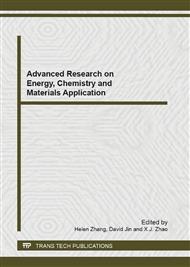p.259
p.263
p.269
p.273
p.279
p.286
p.291
p.297
p.302
Regulated Emissions Characteristics of a Common Rail Diesel Engine Fueled with Different N-Butanol/Diesel Blends
Abstract:
Regulated emissions of a China stage Vcommon rail diesel engine without modification fueled with China stageV diesel (D100) and different n-butanol/diesel blends are tested. The blends are 0%10%20%30% and 50% by volume of n-butanol. The influences of COTHCNOx and PM emissions by the fraction are analyzed. The results show that, under full load conditons, compared with D100, with the fraction increasing, the emission of NOx increased at low speed and then differed little at medium and high speed; CO, THC decreased respectively; PM differed little at low speed and then decreased with the speed increasing. At the maximum torque speed 1400r/min and rated speed 2200r/min , compared with D100,the emission of NOx under low load and COTHC under high load decreased respectively. With the load increasing, the engine emissions of particle number concentration transfer from the multimodal logarithmic distribution to unimodal logarithmic distribution form.
Info:
Periodical:
Pages:
279-285
Citation:
Online since:
November 2013
Authors:
Keywords:
Price:
Сopyright:
© 2014 Trans Tech Publications Ltd. All Rights Reserved
Share:
Citation:


